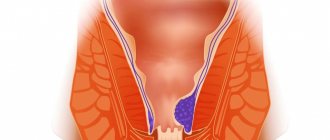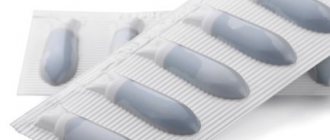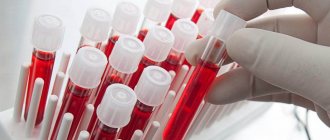Get a consultation Banal hemorrhoids can cause serious discomfort. Enlarged venous nodes in the rectum cause a sensation of the presence of a foreign body and bleed. According to statistics, the described problem plagues every fourth inhabitant of the planet. There is also a modern treatment method - disarterization of hemorrhoids, which does not require surgical intervention. A minimally invasive technique can completely eliminate the problem without causing severe discomfort to the patient. Removal of hemorrhoids can be done without surgery!
About disarterization
Disarterization of internal hemorrhoids is a medical procedure that is used to treat proctological diseases. The treatment is also called hal rar. The technique does not require surgical intervention, which affects soft tissue.
The procedure is one of the most effective in the treatment of hemorrhoids; the risk of relapse after the procedure is reduced to zero. Sometimes, in parallel with disarterization, a tightening, so-called lifting, is performed. The therapy helps to strengthen the internal hemorrhoids. In the private proctology center “Proctologist 81”, surgical intervention is performed by doctors of the highest category who are able to cure the disease even at an advanced stage. Modern technical equipment is used to conduct research. The disease will be detected even in the early stages. Desarterization will eliminate the disease without affecting healthy tissue.
Most often, disarterization of hemorrhoids is performed under Doppler control. During the procedure, Doppler ultrasound is used. This method was developed back in the early 2000s, but is still popular today. For this purpose, a special surgical instrument is used, namely an anoscope, which has a built-in ultrasonic sensor.
During disarterization of hemorrhoids at the Proctologist 81 clinic, a medical specialist not only monitors the condition of the internal organs, but also diagnoses the sound of arterial pulsation. It is carried out both in the first and critical stages of hemorrhoids.
Irina
Many thanks to Yulia Yuryevna Kovaleva for her caring attitude. I'm very glad that I came across her. Everything is clear, competent and professional. Thank you again! And many thanks to the medical staff of the clinic for their attentiveness and kindness!
* The promotion applies only to primary patients of the clinic ** The management of the medical center takes all measures to timely update the price list posted on the website, but in order to avoid possible misunderstandings, we recommend that you check the cost of services by calling: +7
or
+7
, or at the reception at the administrators, you will be provided with the necessary information.
*** The posted price is not an offer. Medical services are provided on the basis of a contract.
Performing disarterization of hemorrhoids with lifting
Before disarterization of hemorrhoids, the patient undergoes a comprehensive examination of the body. The proctologist conducts an initial examination, inserts a finger into the anus to find out the size of the hemorrhoids. Next, the patient is sent for a general blood, urine, and stool test. A blood test is taken to check glucose levels and the presence of viral and infectious diseases.
In advanced stages of hemorrhoids, the effect is produced by disarterization of hemorrhoids with mucopexy. Lifting allows not only to remove hemorrhoids, but also to tighten soft tissues that have been deformed.
Before the operation, the patient attends an examination with a proctologist. The medical examiner inserts into the anus to find out what size the hemorrhoids are. Next, the patient is sent for a general blood, urine, and stool test. It is advised to take a test for blood glucose levels and conduct research for the presence of viral infections in the body.
Computed tomography, ultrasound diagnostics, radiography using contrast fluid, electrocardiogram and other medical studies are performed. Proctologists advise following a strict diet before surgery. It is necessary to exclude from the diet foods that cause fermentation. We are talking about cabbage, legumes, and fermented milk products.
The diet should include cereals, broths, and plenty of drinking. Immediately before the procedure, the patient is given an enema to cleanse the intestines. The therapy is painless, there is no discomfort, as the person is immersed in medicated sleep. Intravenous sedation is administered. The injection is administered in the lumbar region. The painkiller takes effect almost immediately.
At the time of the procedure:
- The anal area is treated with disinfectants.
- The doctor inserts a surgical instrument called an anoscope into the rectum. There is an electronic sensor on the device. It provides information about the pulsation of hemorrhoidal arteries.
- The surgeon discovers a place that needs to be stitched. An ultrasonic sensor transmits information about the operation of damaged vessels. The vessels are stitched with a special thread, which is what the lifting procedure consists of.
- The vessels are stitched with a certain suture to interrupt the blood supply. Hemorrhoids are moved into the anus. This procedure prevents them from falling out.
- Two weeks after the operation, the tumors die and fall out of the anus. After surgery, bleeding no longer occurs. The growth of hemorrhoids has been stopped.
Immediately after the procedure, the patient goes home. Further inpatient treatment is not used.
It is worth noting that in advanced cases the procedure is ineffective. If the size of hemorrhoids exceeds three centimeters, then hemorrhoidectomy is performed, in which the lumps are removed along with the site of formation.
Non-surgical treatment of hemorrhoids
People suffering from hemorrhoids are sometimes so exhausted by the pain that they do not know what methods to turn to to get rid of the discomfort.
They are ready to take the most emergency measures just to stop all the negative aspects that hemorrhoids bring. Do you need to hurry? Let's see if there are effective methods for getting rid of hemorrhoids without radical surgery.
Modern medicine offers such treatment for a delicate problem as disarterization. What is this? This technique is minimally invasive and is aimed at:
- Destruction of hemorrhoids without their removal
- prevention of the appearance of new hemorrhoidal formations.
Desarterization allows you to gently treat hemorrhoids. The origins of this treatment method are relatively young (1995); a Japanese-born surgeon, Morinag, developed this technique. Over time, this “antihemorrhoidal drug” has undergone a number of changes - in addition to the initial ligation of hemorrhoidal arteries, node tightening was added.
Recovery after disarterization
The proctologist prescribes analgesic and painkillers to the patient to relieve pain. A personalized diet is prescribed. During the rehabilitation period, it is also worth excluding legumes, vegetables, baked goods, and exotic fruits, which can slow down bowel function.
It is worth rinsing the anal area with warm water after each bowel movement. This is necessary in order to prevent the development of infection. Apply antiseptic medications to the affected area twice a day. Hot water irritates the rectal mucosa.
It is strictly forbidden to have sexual activity for a month after the operation. Anal sex can lead to bleeding and anal fissures. It is necessary to exclude physical activity and ensure complete rest.
During rehabilitation, it is recommended to visit the proctologist several times to avoid postoperative complications. During this period, the patient takes laxatives and uses Vaseline oil. As a rule, there are no complications after disarterization, but if any complaints appear, you should immediately consult your doctor.
Postoperative period
The rehabilitation period begins immediately after completion of the operation. Since surgery involves the circulatory system, the patient is under the supervision of qualified medical personnel for the first 3-4 hours after the procedure.
To relieve pain, which cannot be avoided since the operation is performed rectally, analgesics are taken. Severe pain subsides after a few hours. The unpleasant symptoms will completely disappear after 3 days. If there are no complications, then after eliminating the discomfort the patient can lead a normal life.
In order to speed up tissue recovery, the development of complications or relapse, surgeons advise in the first month:
- eat liquid food;
- stick to four meals a day;
- all meat products are prepared by stewing;
- consume fiber in the form of vegetables, fruits and berries (certain types) and protein and plant foods;
- exclude the intake of any products that can provoke irritation of the walls and mucous membrane of the gastrointestinal tract;
- exclude fried and fatty foods;
- do not drink alcohol and stop smoking;
- drink more fluids;
- do not do enemas;
- do not take a hot bath or use a sauna;
- take laxatives;
- exclude sexual intercourse.
The surgeon will prescribe the necessary medications and also explain how to treat the operated area.
Benefits of the procedure
Desarterization is one of the most popular medical procedures for the treatment of hemorrhoids. The operation is known for a number of advantages, including:
- Efficiency. The effect of the hal rar method appears immediately after the procedure. The bleeding stops, the hemorrhoids do not fall out, and their growth is stopped. The patient does not suffer from itching and burning in the anus. In addition, this procedure not only relieves the patient of pain, but eliminates the source of the disease and eliminates the cause of inflammation.
- Speed of the procedure. On average, the procedure lasts for an hour. The patient goes home on the same day. Conservative treatment continues.
- Comfortable carrying out. During disarterization, the patient is in medicated sleep, so there is no pain.
- Versatility. This treatment technique is called universal, since it is used in both the first and fourth stages of hemorrhoids. It is carried out even in the presence of fistulas and anal fissures.
- Safety. Desarterization has virtually no contraindications and is carried out for all age categories.
- Short-term rehabilitation. Rehabilitation is two weeks. Wounds heal quickly.
- No complications. In most cases, there are no complications after surgery. There are no scars or scars, as soft tissues are not damaged.
In addition, disarterization has a positive effect on reducing the flow of arterial blood to damaged vessels. Blood circulation in the veins improves. The size of internal and external hemorrhoids decreases.
How to prepare for surgery
The main preparation consists of the patient undergoing an examination, which is prescribed by the doctor.
Before the operation, the patient undergoes an examination including:
- general blood test, biochemistry, Rh factor and group;
- analysis
- venous blood for hepatitis, HIV and a number of other diseases;
- electrocardiogram;
- fluorography.
If there are no contraindications to surgery, the doctor gives recommendations for preparation:
Compliance with the doctor’s recommendations will help to avoid difficulties during surgery and avoid complications in the postoperative period.
Features of the technology
Local anesthesia is used . The specialist uses special tools to make a running stitch from the top of the hemorrhoidal growth to its main part. The fabric is compressed using a stitch.
Thanks to the anoscope, the prolapsed tissue of the node is collected. The expert ties the ends of the threads, tightens the knot and, through a continuous seam, “tightens” the tissue, achieving a lifting .
Restoring the normal position of the tissues allows you to preserve the functions of the rectum without traumatizing its mucosa.











